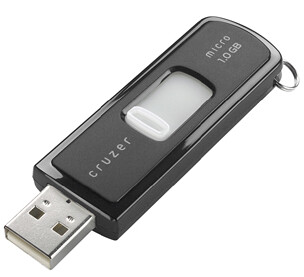

One of the more complicated things about setting up a Home Theater PC (HTPC) is the process of setting up the HTPC server. Getting all the drivers, firewire setup and even the installation of the HTPC software itself can be daunting especially when you account for making everything work with the multitude of hardware configurations and operating system issues.
SageTV is working on a solution for this problem that eliminates nearly all of that headache and makes the installation and setup as easy as booting from a USB drive. You supply the computer and hardware and this product handles most of the setup.
Coming Soon: The SageTV Linux Media Server
In an interview GeekTonic had with Jeff Kardatzke, CTO of SageTV we learned of a new product coming soon - for now we'll call it the "SageTV Linux Media Server." Basically it involves a USB flash drive that contains a complete "image" of the server software and all the drivers and programs needed to run a computer as a full-fledged HTPC server. When I asked Kardatzke about availability he said this:
"we’re working on it [SageTV Linux Server] now so within a few months hopefully."
Kardatzke went on to say it should enter beta sometime in the next few months so it should be available for sale at some point after that.
SageTV Server With Everything "Built-In"
The SageTV Linux Media Server is designed to be used as with a "headless" (without TV/monitor) server. So basically you would take a computer with all of its hardware installed, plug in the USB flash drive into the computer and boot the computer with that flash drive. It boots up into SageTV and you already have your HTPC software there along with everything you need to make it work. Also included is the ability to connect with Placeshifter, have all drives formatted into a raid array etc.
No Cost for Operating System
Since it will use Linux, there's no cost for the operating system either - and you really don't need much (if any) knowledge of Linux to run it either since everything is set up and handled by the USB drive. Even better you won't need to use up hard drive space for the operating system so those hard drives will be free for storing and serving your media.
Hardware Support Should be Flexible
The Linux Media Server is being designed to accommodate as many hardware devices and configurations as possible. Mr. Kardatzke said this to say about hardware support:
"It's going to be very flexible with regards to the hardware. Pretty much any motherboards that work with Linux will work with it... we’re using the latest drivers on everything. So the only limitation is that the hardware has to work on Linux which is pretty open in terms of motherboards, hard drives, usb drives etc. The capture devices will definitely be limited somewhat, but the most popular ones such as the SiliconDust HDHomeRun, Hauppauge products and other tuners as well will all be supported."
Unanswered Questions about this are many as it isn't even in beta yet. Here's a few of those questions:
- How much will it cost?
- What Linux Distro does it use as a base?
- When?
- Will commercial detection work?
Commercial Detection in Linux - How To
Regarding the commercial detection I asked a seasoned SageTV user "bcjenkins" who uses Linux with SageTV how he does it. Here's how he handles commercial detection with the current Linux version of SageTV:
- Install Wine
- Install Comskip by decompressing zip file
- Run my comchecker script
I use it to process mpeg-2 files with no issue. I haven't tried with H264 in a long while, but could revisit again. He said that he would upload the script to the SageTV downloads section and it's also available here
Not sure at this point what setup will be involved for commercial detection or if it might somehow be worked into the install, but it looks like it is certainly possible.
Conclusion
Overall I'm very intrigued by the concept of the "server on a stick." I think it definitely has the potential to make HTPCs more accessible to those who might be willing to try HTPCs, but don't like the hassle or are wary of the computing knowledge required. The success of such a concept really depends on how effortless it really is.
The Linux Media Server concept would offer an additional solution for new users or existing users who are considering a new server build. Possibly a good solution for an HTPC enthusiast helping a friend or family member with an install as well. Bottom line, it's a good thing for the SageTV ecosystem and likely a step further towards plug-n-play HTPC hardware.
Disclaimer: While all of this article is based on discussions with SageTV, this product has not been released to Beta yet so the details are of course subject to change.
Stay tuned to GeekTonic for more in-depth and informative articles and news about Media Gadgets, HTPCs and SageTV.
